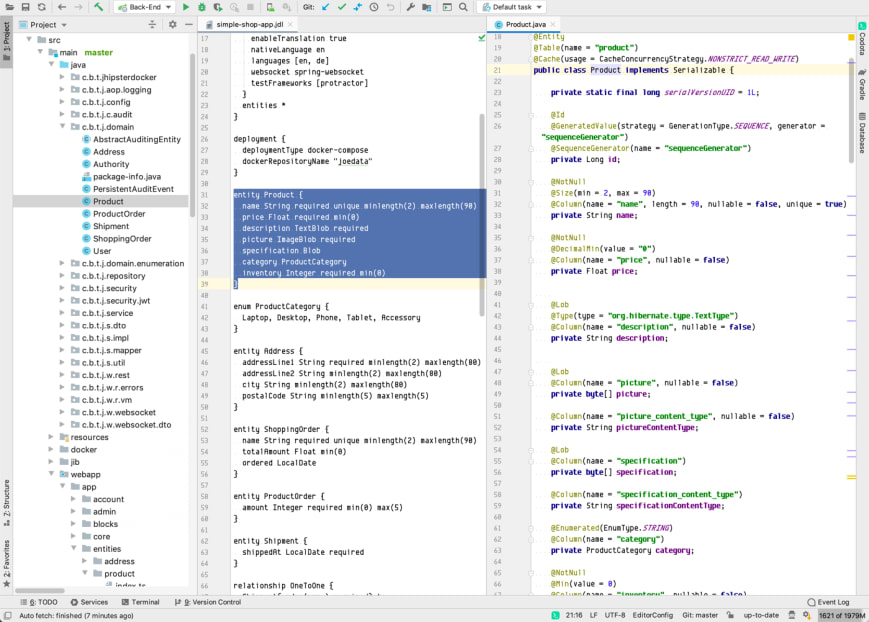Explore the JHipster code

Previously in the “Better Java Projects Faster with JHipster and Docker” tutorial
In
the second installment of the “Better Java Projects Faster with JHipster and Docker” tutorial,
we first installed all the software we need. Then we generated and ran the JHipster application. Finally, we explored its
administration and entity sections. Your project source code should look like
the “master” branch of the GitHub project.
Goals for this installment
In this third installment of the tutorial, we look at the JHipster code in our IDE:
- We install or configure either Eclipse or IntelliJ for Spring Boot and Angular.
- We import the project into either Eclipse or IntelliJ.
- We inspect the code that JHipster created for our entities.
Want more?
If you want to read the whole tutorial, then head over to the third installment of the “Better Java Projects Faster with JHipster and Docker” tutorial.
Java Tech Popularity Index Q1/2024:
Developer job ads down 32% year over year, Stack Overflow questions dropped 55% since ChatGPT. I now recommend IntelliJ Community Edition because many AI code assistants don't run in Eclipse. Job ads for Quarkus hit an all-time high.
Developer job ads down 32% year over year, Stack Overflow questions dropped 55% since ChatGPT. I now recommend IntelliJ Community Edition because many AI code assistants don't run in Eclipse. Job ads for Quarkus hit an all-time high.
Read my newsletter